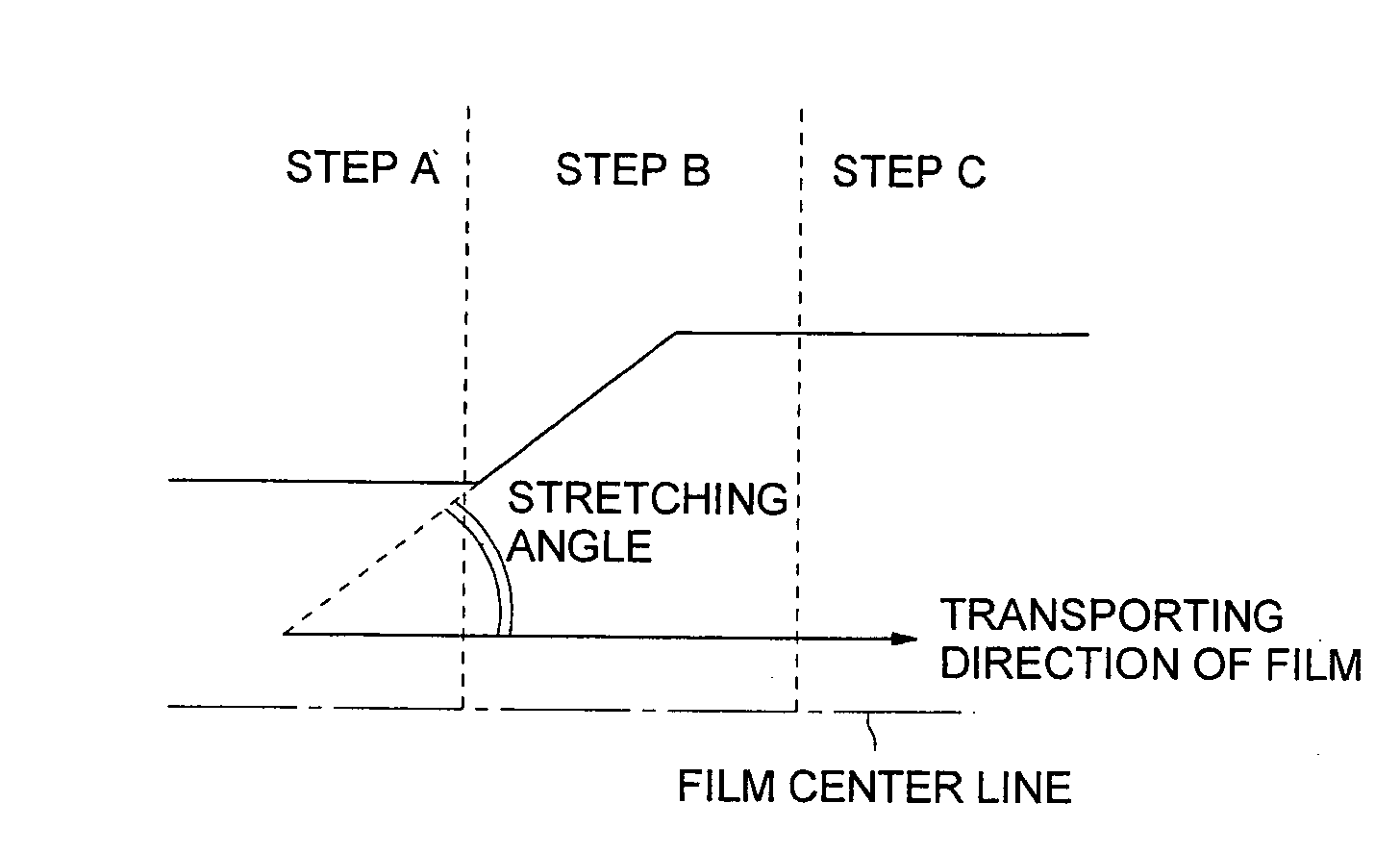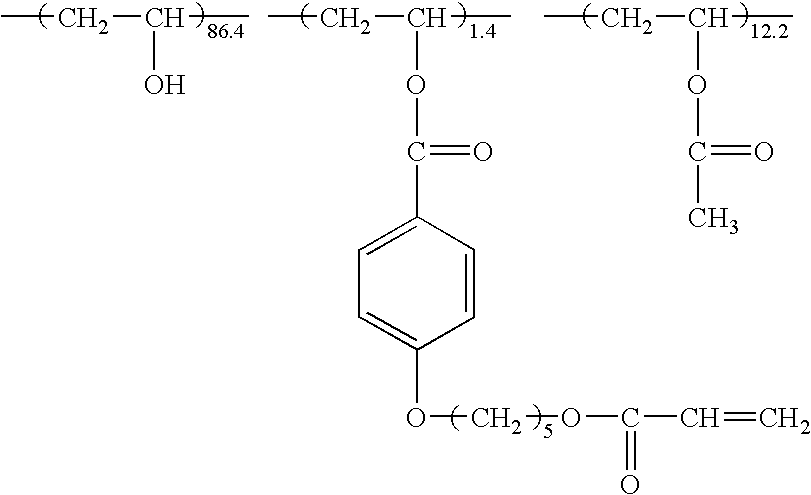Cellulose ester film, its manufacturing method, optical retardation film, optical compensation sheet, elliptic polarizing plate, and image display
- Summary
- Abstract
- Description
- Claims
- Application Information
AI Technical Summary
Benefits of technology
Problems solved by technology
Method used
Image
Examples
example 1
<<Preparation of Cellulose Ester Film 1>>
A dope and a UV absorber solution were prepared as described below, and cellulose ester film 1 was prepared employing the dope and UW absorber solution.
(Preparation of Dope)
Cellulose acetate propionate (with an acetyl substitution degree of 2.00 and a propionyl substitution degree of 0.80 and a viscosity average polymerization degree of 350) of 100 parts, 2 parts of ethylphthalylethyl glycolate, 8.5 parts of triphenyl phosphate, 290 parts of ethylene chloride, and 60 parts of ethanol were placed into a tightly sealed vessel, and gradually heated to 45° C. in 45 minutes while slowly stirred. Pressure in the vessel was 1.2 atmosphere. The resulting solution was filtered employing Azumi filter paper No. 244, produced by Azumi Roshi Co., Ltd., and allowed to stand for 24 hours to remove foams in the solution. Thus, a cellulose ester solution was prepared.
(Preparation of UV Absorber Solution)
Five parts of the cellulose acetate p...
example 2
<<Preparation of Cellulose Ester Film 2>>
In the same manner as in Example 1, the dope was cast on a stainless steel belt support to form a web, and the web was peeled. The residual solvent content at the peeling of the web was 90% by weight. The peeled web was transported in the D0 step at a transporting tension of 100 N / m. Ethanol / (ethanol+methylene chloride) at the terminal point of the D0 step was 62% by weight.
Both edges of the peeled web were held with clips in the step A and the distance between the clips was changed by applying a tension in the transverse direction of the web at a stretching speed of 250% / min in the step B, employing a uniaxial stretching tenter. The ambient temperature was 170° C. and the stretching magnification was 1.5.
At the beginning of the stretching, the web temperature was 80° C. and the residual solvent content of the web was 30% by weight. At the terminal point of the stretching, the web temperature was 100° C., the residual solvent c...
example 3
<<Preparation of Cellulose Ester Film 3 (Comparative)>>
In the same manner as in Example 1, the dope was cast on a stainless steel belt support to form a web, and the web was peeled. The residual solvent content at the peeling of the web was 90% by weight. The peeled web was transported in the D0 step at a transporting tension of 100 N / m. Ethanol / (ethanol+methylene chloride) at the terminal point of the D0 step was 95% by weight.
Both edges of the peeled cellulose ester film were held with clips in the step A and the distance between the clips was changed by applying a tension in the transverse direction of the web at a stretching speed of 250% / min in the step B, employing a uniaxial stretching tenter. The ambient temperature was 170° C. and the stretching magnification was 1.5.
At the beginning of the stretching, the web temperature was 150° C. and the residual solvent content of the web was 4% by weight. At the terminal point of the stretching, the web temperature was ...
PUM
| Property | Measurement | Unit |
|---|---|---|
| Temperature | aaaaa | aaaaa |
| Fraction | aaaaa | aaaaa |
| Fraction | aaaaa | aaaaa |
Abstract
Description
Claims
Application Information
 Login to View More
Login to View More - R&D
- Intellectual Property
- Life Sciences
- Materials
- Tech Scout
- Unparalleled Data Quality
- Higher Quality Content
- 60% Fewer Hallucinations
Browse by: Latest US Patents, China's latest patents, Technical Efficacy Thesaurus, Application Domain, Technology Topic, Popular Technical Reports.
© 2025 PatSnap. All rights reserved.Legal|Privacy policy|Modern Slavery Act Transparency Statement|Sitemap|About US| Contact US: help@patsnap.com



